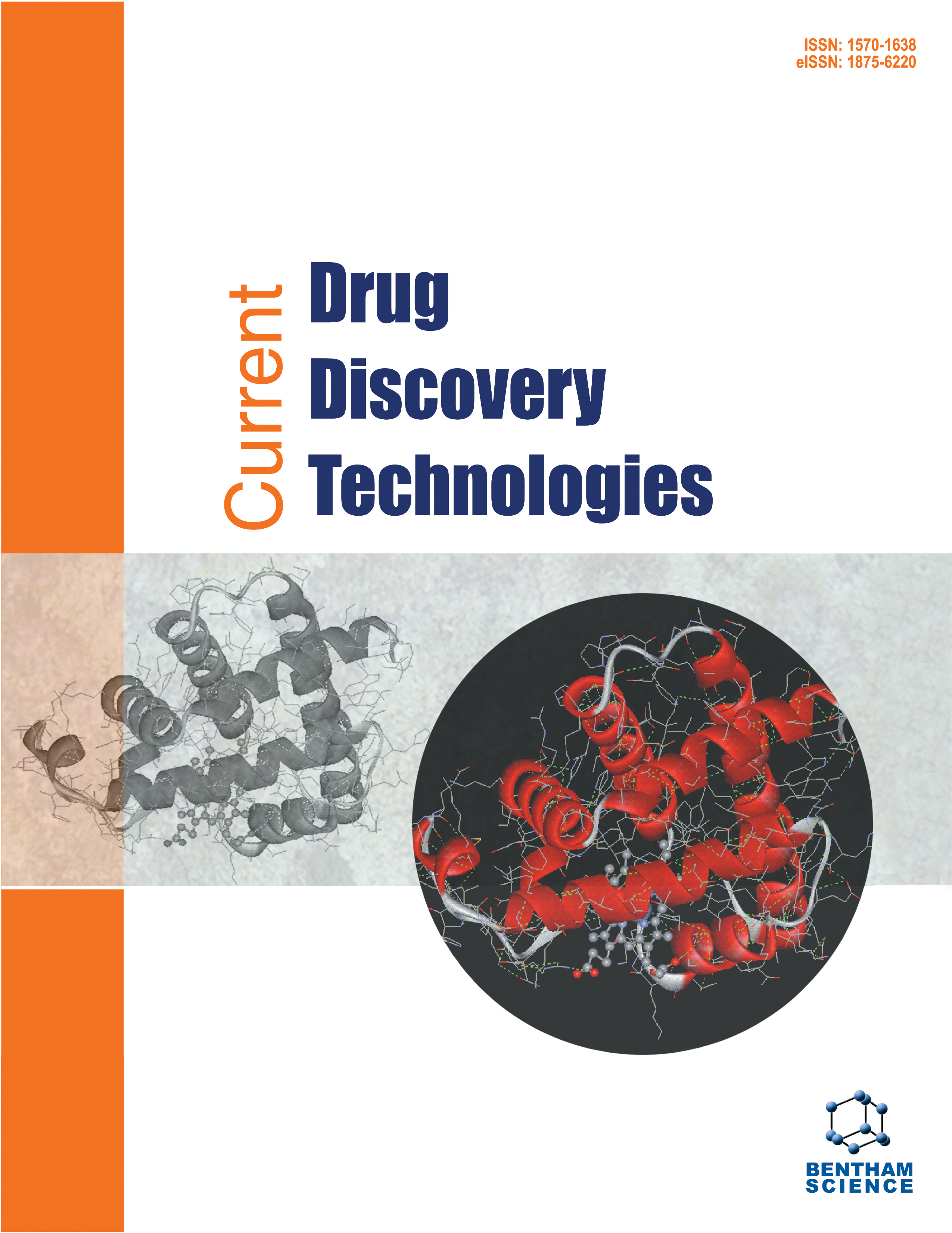- Home
- A-Z Publications
- Current Drug Discovery Technologies
- Previous Issues
- Volume 11, Issue 3, 2014
Current Drug Discovery Technologies - Volume 11, Issue 3, 2014
Volume 11, Issue 3, 2014
-
-
Microemulsions Based Transdermal Drug Delivery Systems
More LessSince the discovery of microemulsions by Jack H Schulman, there has been huge progress made in applying microemulsion systems in plethora of research and industrial process. Microemulsions are optically isotropic systems consisting of water, oil and amphiphile. These systems are beneficial due to their thermodynamic stability, optical clarity, ease of preparation, higher diffusion and absorption rates. Moreover, it h Read More
-
-
-
Cubosomes as Targeted Drug Delivery Systems - A Biopharmaceutical Approach
More LessCubosomes are reversed bicontinuous cubic phases and possess unique physicochemical properties. These special systems are receiving much attention for the delivery of various hydrophilic, hydrophobic and amphiphilic drugs with enhanced bioavailability and high loading capacity. A wide variety of drugs are applicable for cubosome formulation for various routes of delivery. The lipids used in cubosome formulation are mo Read More
-
-
-
Formulation and Pharmacodynamic Evaluation of Glibenclamide Incorporated Niosomal Gel
More LessObjective: The research aims to formulate and develop the controlled release profile of glibenclamide by encapsulating glibenclamide into niosomes followed by incorporation into an aqueous gel base. Materials and methods: Glibenclamide incorporated niosomes were prepared by a modified ether injection technique using Span 20/Span 80 and cholesterol. The prepared niosomes were evaluated for chemical incomp Read More
-
-
-
Transformation of Curcumin from Food Additive to Multifunctional Medicine: Nanotechnology Bridging the Gap
More LessCurcumin (CUR) is a yellow-coloured polyphenolic compound obtained from the rhizomes of Curcuma longa. In-depth pharmacological screening of curcumin has given the evidence that CUR persuades shielding and curative effects against various cancers, cardiovascular, wound healing effect and neuro disorders etc owning to anti-oxidant, antiproliferative, anti-inflammatory, anti-angiogenic and antimicrobial activities. Howeve Read More
-
-
-
Single Amino Acid Repeats Connect Viruses to Neurodegeneration
More LessAuthors: Guglielmo Lucchese and Darja KanducWe report on a high level of octapeptide matching between HCV, HIV-2, MPV, MUV, EBV, HHV-6, and CMV, and human brain antigens that, when altered, have been specifically associated with neuropathologies such as amyotrophic lateral sclerosis, spinocerebellar ataxia, frontotemporal degeneration, Huntington disease, Parkinson disease, cognitive impairment, aphasia and oculomotor apraxia. Quantitatively, the extent Read More
-
-
-
Effects of Perfluorocarbon Dodecafluoropentane (NVX-108) on Cerebral Microvasculature in the Healthy Rat
More LessNVX-108, a dodecafluoropentane-based perfluorocarbon (PFC) emulsion, has therapeutic potential as an oxygen- carrying fluid for emergency medical treatment for traumatic brain injury (TBI) and hemorrhagic shock. Potential cerebral vasoactive properties were assessed by directly measuring pial arteriolar vessel diameters before and after a 30 minute intravenous (IV) infusion of 1.0 ml/kg (high dose [H]) or 0.25 ml/ Read More
-
-
-
Sodium-Assisted Formation of Binding and Traverse Conformations of the Substrate in a Neurotransmitter Sodium Symporter Model
More LessAuthors: Agnes Simon, Akos Bencsura, Laszlo Heja, Csaba Magyar and Julianna KardosTherapeutics designed to increase synaptic neurotransmitter levels by inhibiting neurotransmitter sodium symporters (NSSs) classify a strategic approach to treat brain disorders such as depression or epilepsy, however, the critical elementary steps that couple downhill flux of sodium to uphill transport of neurotransmitter are not distinguished as yet. Here we present modelling of NSS member neuronal GAT1 with the substrate Read More
-
-
-
Biofilm Formation by Candida albicans is Inhibited by 4,4-Dichloro Diphenyl Diselenide (pCl-PhSe)2
More LessCandida species are the fourth most common cause of nosocomial bloodstream infections. An increase in the frequency of infections which have become refractory to standard antifungal therapyhave been observed. Recently, the effect of different organochalcogenide compounds reducing both growth and germ tube formation by Candida albicans was demonstrated. This work studied the effect of the organochalcogenide c Read More
-
Volumes & issues
-
Volume 22 (2025)
-
Volume 21 (2024)
-
Volume 20 (2023)
-
Volume 19 (2022)
-
Volume 18 (2021)
-
Volume 17 (2020)
-
Volume 16 (2019)
-
Volume 15 (2018)
-
Volume 14 (2017)
-
Volume 13 (2016)
-
Volume 12 (2015)
-
Volume 11 (2014)
-
Volume 10 (2013)
-
Volume 9 (2012)
-
Volume 8 (2011)
-
Volume 7 (2010)
-
Volume 6 (2009)
-
Volume 5 (2008)
-
Volume 4 (2007)
-
Volume 3 (2006)
-
Volume 2 (2005)
-
Volume 1 (2004)
Most Read This Month
Article
content/journals/cddt
Journal
10
5
false
en


